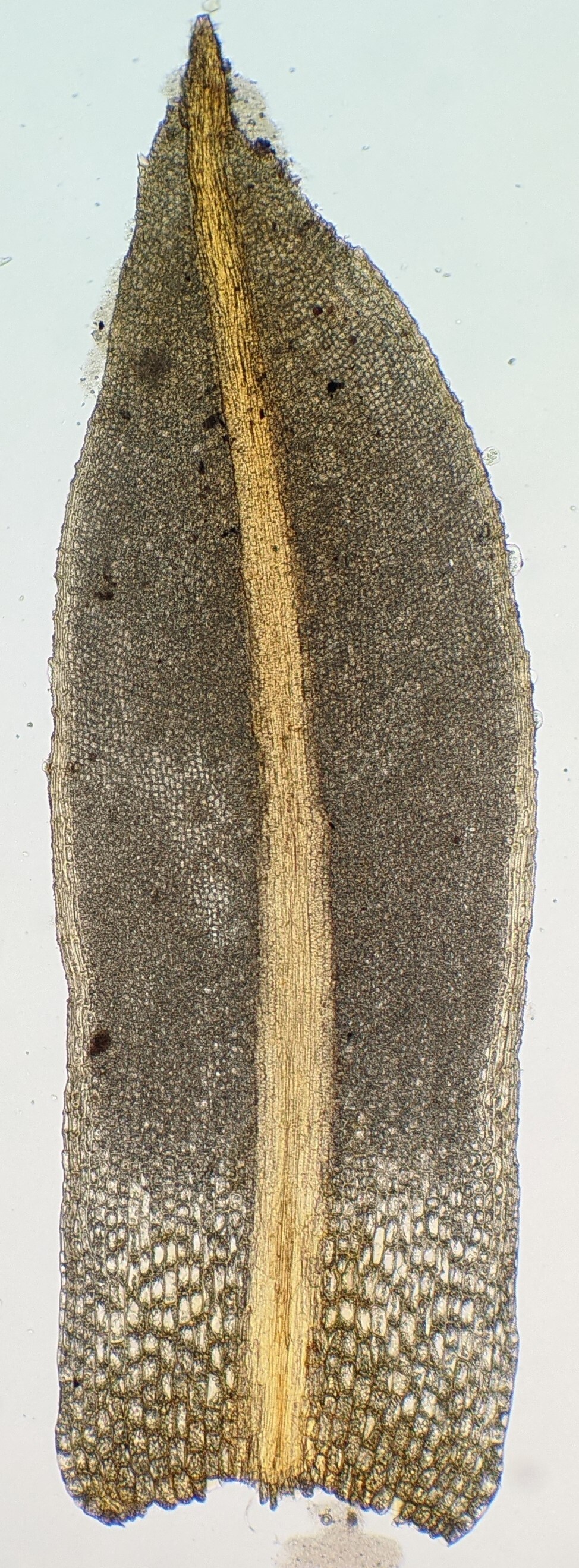Hennediella
Dioicous, autoicous (not in Victoria), paroicous (not in Victoria) or synoicous (not in Victoria). Asexual reproduction by rhizoidal tubers. Turves or cushions on soil or rock. Stem irregularly branched, with abundant rhizoids near base; central strand present; sclerodermis absent or present; hyalodermis absent or weakly developed. Leaves ovate, lanceolate, elliptic, oblong, ligulate or spathulate, erect- or wide-spreading when moist, appressed or incurved when dry; apex acute (not in Victoria), obtuse and apiculate or rounded; costa subpercurrent (not in Victoria), percurrent (not in Victoria) or short-excurrent as a denticulate mucro, with quadrate to short-rectangular adaxial superficial cells, with a differentiated adaxial epidermis, without an adaxial stereid band, with a hydroid strand, with an abaxial stereid band, with a differentiated abaxial epidermis, with elongate abaxial superficial cells; margin denticulate or dentate near apex or rarely entire throughout (not in Victoria), plane or recurved (not in Victoria), with a uni- (not in Victoria) or multistratose border of more elongate cells, sometimes border intramarginal (not in Victoria); laminal cells in apical half quadrate, hexagonal or short-rectangular (not in Victoria), pluripapillose or rarely all smooth (not in Victoria), with an orange (not in Victoria) or red KOH reaction; basal laminal cells differentiated equidistant from base from margin to costa or extending higher near costa, quadrate to rectangular. Acrocarpous. Capsules erect, straight, ovoid or cylindric, exserted or immersed, operculate, with an annulus. Calyptra cucullate. Operculum conic or rostrate. Peristome absent, rudimentary (not in Victoria) or of 32 twisted filaments (not in Victoria).
Cosmopolitan, with fifteen species recognised in a monograph of Hennediella by Cano (2008); one species in Victoria.
A nuclear ITS phylogeny of Hennediella and related genera suggest that three of the 15 species recognised in the genus by Cano (2008) may be misplaced in Hennediella and their placement requires confirmation from further study that utilises sequences of additional DNA regions and taxa, including from the closely related genus Tortula (Cano et al. 2009). The sole Victorian species, H. stanfordensis (Steere) Blockeel, is most likely well placed in Hennediella given that it was resolved in a core group of Hennediella and has morphology typical of this genus (Cano et al. 2009).
 Spinning
SpinningCano, M.J. (2008). Taxonomic revision of Hennediella Paris (Pottiaceae, Bryophyta). Bryophytorum Bibliotheca 64: 1–142.
Cano, M.J.; Jiménez, J.F.; Gallego, M.T; Jiménez, J.A; Guerra, J. (2009). Phylogenetic relationships in the genus Hennediella (Pottiaceae, Bryophyta) inferred from nrITS sequence data. Plant Systematics and Evolution 281: 209–216.

